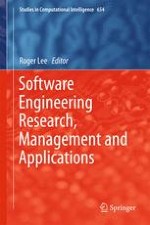2016 | OriginalPaper | Chapter
Object Oriented Method to Implement the Hierarchical and Concurrent States in UML State Chart Diagrams
Authors : E. V. Sunitha, Philip Samuel
Published in: Software Engineering Research, Management and Applications
Publisher: Springer International Publishing
Activate our intelligent search to find suitable subject content or patents.
Select sections of text to find matching patents with Artificial Intelligence. powered by
Select sections of text to find additional relevant content using AI-assisted search. powered by
